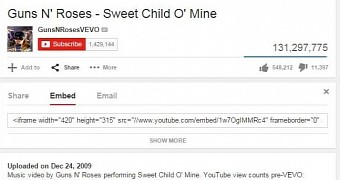The Court of Justice of the European Union has finally handed out a ruling that won’t make Internet users cringe – embedding copyrighted videos does not qualify as infringement. Finally, a decision that makes sense.
TorrentFreak reports that the court passed a ruling that states that embedding videos that are under copyright isn’t exactly the same as copyright infringement, which, of course, makes sense. Those who do not want to have their videos embedded by various publications, whether news organizations or blogs, can simply block this when uploading the content to a site like YouTube, for example.
The ruling that was handed out a few days ago is a landmark decision that deals with something that is such a big part of the Internet nowadays. The question of whether or not it is legal to embed copyrighted content without permission from the rights holder has been asked one too many times and it needed a definitive answer.
The case was referred to the EU court by a German court and deals with the bickering between the water filtering company BestWater International and two men who work as independent commercial agents for a competitor. The company accused the men of embedding one of their promotional videos posted on YouTube without the company’s permission.
This, of course, is a perfectly common practice with YouTube videos across the entire Internet, as well as with many other platforms, such as Vimeo, for instance.
Now the EU law is clear on embedding, too
The European Union laws are pretty clear on most piracy issues, there’s little in there about embedding copyrighted works. Now that the Court of Justice has ruled that there’s no copyright infringement in including such a video on a site.
“The embedding in a website of a protected work which is publicly accessible on another website by means of a link using the framing technology… does not by itself constitute communication to the public within the meaning of [the EU Copyright directive] to the extent that the relevant work is neither communicated to a new public nor by using a specific technical means different from that used for the original communication,” reads the Court’s verdict.
As ludicrous as this sounds, the Court actually has a previous case on which it based its decision, namely one in which someone claimed that hyperlinking to a previously published work was copyright infringement, another case in which the judges ruled wisely.

 14 DAY TRIAL //
14 DAY TRIAL //